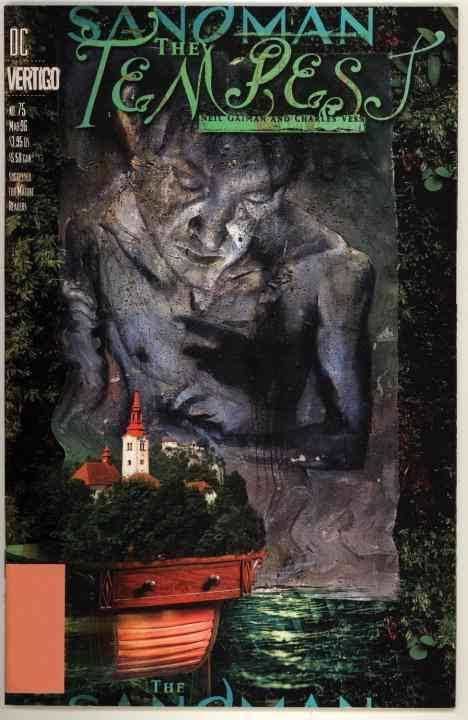Title(s) The Sandman #70-75 Originally published 2012 | ISBN ISBN 1-56389-287-1 Main character Dream | |
 | ||
Publication date August 1995 - March 1996 Genre Dark fantasyMythology in comics Artist(s) Dave McKeanMichael ZulliCharles VessBryan TalbotJohn RidgwayJon J MuthDaniel Vozzo Similar Neil Gaiman books, Other books | ||
The Wake is the tenth and final collection of issues in the comic book series The Sandman. It is written by Neil Gaiman, illustrated by Michael Zulli, Jon J. Muth and Charles Vess, colored by Daniel Vozzo and Jon J. Muth, and lettered by Todd Klein.
Contents
The collection opens with James Elroy Flecker's poem "The Bridge of Fire", prefacing the events which follow.
The stories in the collection first appeared in 1995 and 1996. The collection first appeared in paperback and hardback in 1996.
It was preceded by The Kindly Ones and followed by Endless Nights.
Synopsis
The first three issues of the volume, "Chapter One, Which Occurs in the Wake of What Has Gone Before", "Chapter Two, In Which a Wake is Held", and "Chapter Three, In Which We Wake", comprise the wake and funeral held for Morpheus, who dies at the end of the ninth collection, The Kindly Ones. It is attended by "dreamers and guests", "celebrants and mourners"; many have played recurrent roles in the preceding volumes. A series of speakers, of which the last Death, reflect on the life and death of the late Dream King. Meanwhile, the new aspect of Dream, previously the child Daniel, starts relationships with the inhabitants of the Dreaming.
Issue 73, "The Wake: An Epilogue Sunday Morning", serves as epilogue to both the wake and the friendship between Hob Gadling and Morpheus, in which Gadling visits a renaissance festival with current girlfriend Guenevere and is visited by Death. Issues 74 and 75 resonate thematically and tonally with the first three issues; in terms of plot, they are placed achronologically.
"An Epilogue, Sunday Mourning"
"Sunday Mourning" follows the immortal Hob Gadling and his girlfriend at a Renaissance fair in twentieth-century America, where Hob, drunk and alone, encounters Death, who confirms Gadling's suspicions concerning Morpheus' death and offers him death as well. After some consideration, Hob refuses. He then falls asleep and dreams of meeting Morpheus and Destruction on a beach, where the Dream King reconfirms his death and his companions laugh. The three walk off together, and Hob returns to his girlfriend.
Gaiman mentioned wanting to do a Renfaire issue with Hob in it because he thought it would be funny for several reasons: Gaiman himself mentioned in "The Sandman Companion" that he never liked Renfaires, particularly in America and wondered what it would be like if someone from the time popped in.
"Exiles"
"Exiles" is something of a companion to a story from Fables and Reflections, "Soft Places". It features an adviser to the Emperor of China, sent into exile after his son allied himself with the White Lotus Rebellion. With a significant nod to the parable style, the old man's act of caring for a stray kitten saves his life when he is lost through a soft (ambiguous) place in reality and meets Morpheus, whom ask him a hypothetically question about the death of a son. So the reader knows, this meeting happens after Orpheus Death and after Brief Lives (confirmed in The Sandman Companion). The old man continues thereafter in the soft place, again meeting Dream (Daniel Hall) who continues Morpheus's conversation. In both conversations he alludes to both former and future events. In the end the old man is reunited with his guide, his loyalty to the Emperor intact.
"The Tempest"
"The Tempest" concludes the bargain struck between Dream and William Shakespeare in "Men of Good Fortune" and featured in "A Midsummer Night's Dream". "The Tempest" sources less from its namesake than "A Midsummer Night's Dream" though Gaiman's tale reflects the Bard's continually. Gaiman sees "The Tempest" as a play about "stories and endings" and thus thought it a fitting end to the series, even though he had initially planned to place the issue long before.
